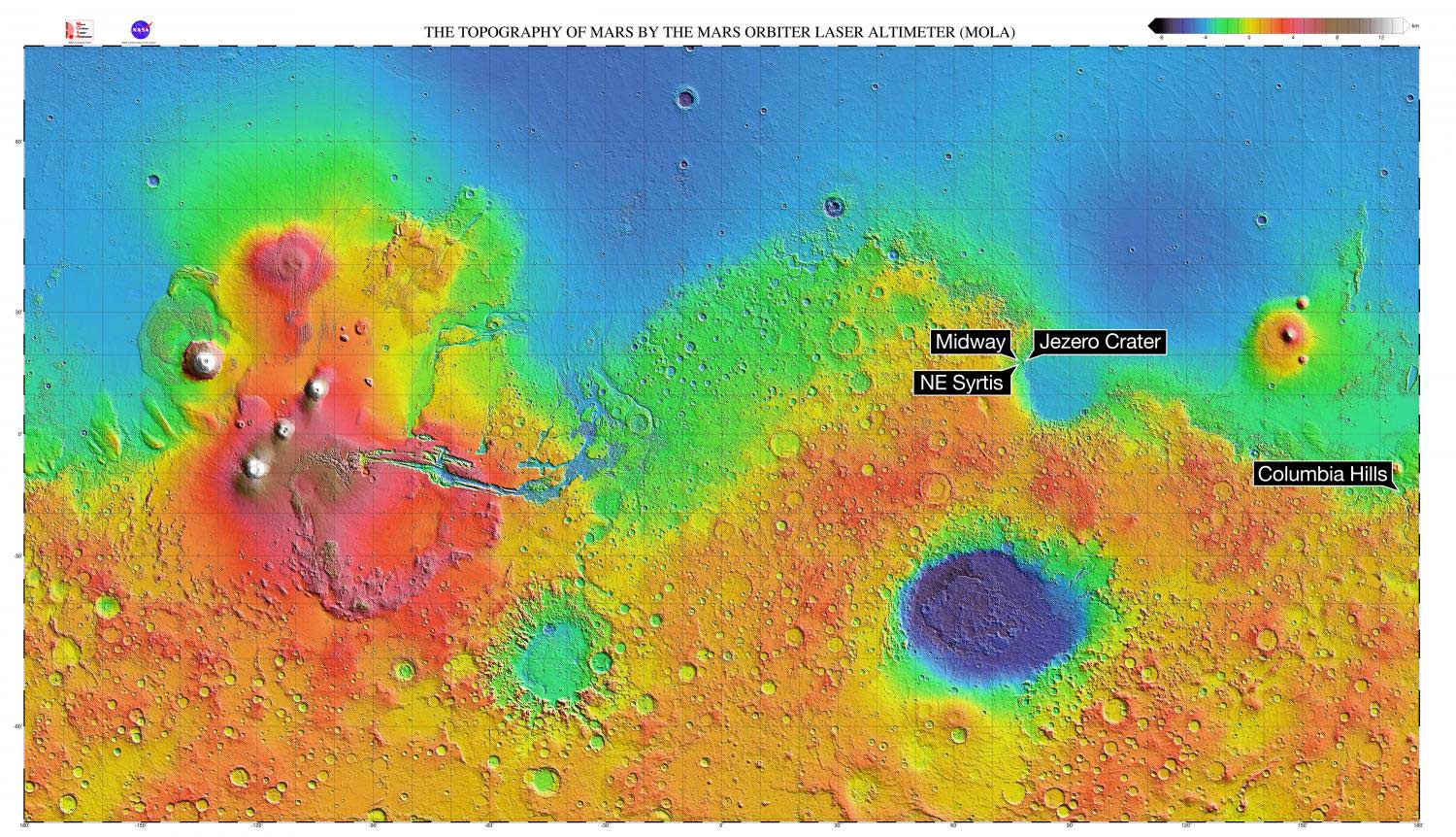 VIEW LARGER Mars map depicts the final four locations under consideration for the landing site of Mars 2020. The topographic map of Mars was created by the Mars Orbiter Laser Altimeter.
VIEW LARGER Mars map depicts the final four locations under consideration for the landing site of Mars 2020. The topographic map of Mars was created by the Mars Orbiter Laser Altimeter.
Following five years of research and discussion, NASA announced today that it has winnowed down 64 candidates to one landing site for the Mars 2020 rover, slated to launch in July 2020.
The 28-mile-wide Jezero crater, site of an ancient stream-fed lake, lies near Mars's equator.
NASA hopes its outcroppings, sediments and river delta will provide insights into the Mars environment as far back as 3.6 billion years, and perhaps include evidence of past microbial life.
Michael Meyer, lead scientist for NASA's Mars Exploration Program, said Jezero won on three criteria:
"The diversity of the ancient environment capable of fundamental discovery, the science potential of the cache samples, and the degree of confidence in the interpretation of the landing sites," he said.
The rover will cache rocks for return by a mission yet to be scheduled, but likely to occur sometime around 2030, and will equip Arizona State University's Mastcam-Z camera.
University of Arizona's HiRISE camera aboard the Mars Reconnaissance Orbiter provided images of potential landing areas to aid in site selection.


By submitting your comments, you hereby give AZPM the right to post your comments and potentially use them in any other form of media operated by this institution.